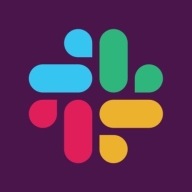

Slack and Microsoft Teams are both prominent players in the team communication and collaboration category. While Slack excels in communication simplicity, Microsoft Teams seems to have the upper hand due to its extensive feature set and integration capabilities with other Microsoft products.
Features: Slack is known for its simplicity in team communication with strong cross-platform integration, offering numerous integrations with services like IFTTT and Zapier. It includes features such as Slackbot reminders and customizable channels, maintaining a communication-centric approach. Meanwhile, Microsoft Teams offers robust collaboration features, including document management, video conferencing, and seamless integration with other Microsoft products, catering to a more comprehensive collaborative environment.
Room for Improvement: Slack users have indicated a need for more advanced features such as improved integrations, video conferencing, and document collaboration tools. Additionally, security and scalability are areas for growth. Microsoft Teams, despite its strengths, is often criticized for its resource consumption and occasional stability issues. There is a demand for better mobile app functionality, integrations with non-Microsoft products, and a more user-friendly interface.
Ease of Deployment and Customer Service: Slack offers deployment options in both public and private clouds, with users seldom requiring technical support, suggesting an intuitive setup. Microsoft Teams provides similar deployment environments, focusing on public cloud utilization. Both solutions offer robust customer support, yet Slack’s minimal support interactions imply user-friendliness, whereas Teams' extensive Microsoft ecosystem integration requires a more hands-on support approach.
Pricing and ROI: Slack is perceived as cost-effective for small teams utilizing its free version, though costs can escalate for larger organizations needing advanced features. Microsoft Teams, included with Microsoft 365, is often considered affordable within bundled plans but can become expensive when additional features are added. Users of both platforms recognize them as worthwhile investments, with Teams potentially offering higher ROI through its integrated suite of services and broad collaborative features.
Microsoft support is excellent, offering instantaneous assistance through either robo support or live personnel.
I have logged tickets for Office 365 and received responses within 24 hours, depending on the severity.
Microsoft Teams is scalable, and I have successfully conducted sessions with close to forty people without significant issues.
Slack is endlessly scalable.
Slack is not as comprehensive as Microsoft Teams in terms of scheduling and hosting meetings.
Microsoft Teams is stable once the setup is completed properly.
It integrates with various systems, allowing us to manage site reliability, availability, and reliability.
Occasionally, Slack behaves unexpectedly and shuts down, which can be irritating, especially when I am in the middle of a task.
AI capabilities should be integrated into Microsoft Teams to provide better transcript services and offer multiple language support.
Microsoft Teams could be improved through more synchronization with other platforms like Calendly and Gmail.
The biggest issue with Microsoft Teams is switching identities, especially when communicating with external organizations.
There is a need to add a call group feature to facilitate scheduling and conducting meetings within Slack.
Configuring chats and pinning in Teams is easier, even though Slack has these features, they are not intuitive enough to engage with.
Microsoft Teams is economical when purchased as part of an Office 365 bundle.
Microsoft Teams comes with Office 365 licenses like E3, but there are options for those who prefer not to pay for Teams by using alternative products like Slack.
Microsoft Teams is also noted for its compliance with GDPR and SOC 2, ensuring data security and compliance.
The platform is user-friendly and has positively impacted our communication, allowing us to communicate with people from different countries and cities in real time.
It serves everything in one place and improves communication within organizations.
In managing releases via Slack channels, one major advantage over Teams is the ability to have threaded discussions, which helps in catching up on relevant discussions without the distraction of interleaved conversations.
The integration with Google Calendar is easy to use and allows us to receive notifications before meetings.


At Microsoft, our mission is to empower every person and every organization on the planet to achieve more. Our mission is grounded in both the world in which we live and the future we strive to create. Today, we live in a mobile-first, cloud-first world, and the transformation we are driving across our businesses is designed to enable Microsoft and our customers to thrive in this world.
We do business in 170 countries and are made up of 114,000 passionate employees dedicated to fulfilling our mission of helping you and your organization achieve more.
Slack is where work happens. It’s a digital workspace that powers your organization — all the pieces and the people — so you can get things done.
Slack brings all your communication together in one place. It's real-time messaging, archiving and search for modern teams.
We monitor all Enterprise Social Software reviews to prevent fraudulent reviews and keep review quality high. We do not post reviews by company employees or direct competitors. We validate each review for authenticity via cross-reference with LinkedIn, and personal follow-up with the reviewer when necessary.